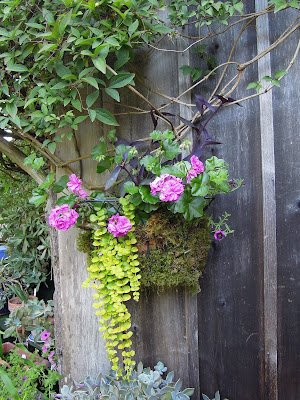 |
Western red cedar, copper rivets and one fat pumpkin for working with nature. Thanks, Eli. |
 |
Wild Foxgloves (Digitalis purpurea) Gatehouse Seeds Spring 2018. |
"The natural garden is a garden planted with species that are natural to their environments, species that would grow wild. Plants are chosen with an entire year, or years, in mind––they are not expected to work for just one season––and the garden design makes use of long-lasting natural materials. Thus the garden is beautiful year-round as well as being easy to maintain. The lawn is reduced to the minimum needed for recreation, shrubs bloom throughout, and are seldom pruned, color comes from dependable perennials and easy-care hybrids, and spaces for entertaining are paved with permanent materials that match the resources in the landscape and require little care. Your garden is the product of a close collaboration between you and nature, in which what you want from the garden is met by the character of your particular location. Instead of fighting the elements to create the perfect lawn and formal garden, you work in partnership with nature to discover and enhance the best features of the land." Ken Druse, The Natural Garden. Clarkson Potter. 1980.
 |
Bowles' Golden Grass (Milium effusum 'Aureum') snugged in with native Sword ferns |
 |
Clematis montana Climbing to the rooftop. |
 |
Foxgloves at Erik and Carol's An artistic planting! |
 |
Summer Snowflakes Gatehouse garden |
 |
Gwen's Begonia Basket catching the orange of the entry door Shaw Island Library & Historical Museum |
 |
Mahonia x "Charity" feeding the winter hummingbirds |
 |
Oriental poppy summer at the Gatehouse. |
 |
Species Rhododendron augustinii Shaw Island, WA. |
 |
Rhododendron "Taurus" Shaw Island, WA. |
 |
Native Crabapple (Malus fusca) Shaw Island, WA. |





